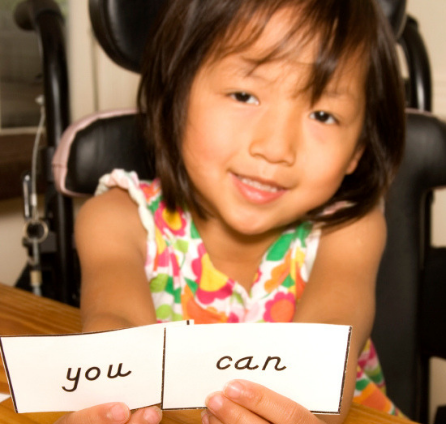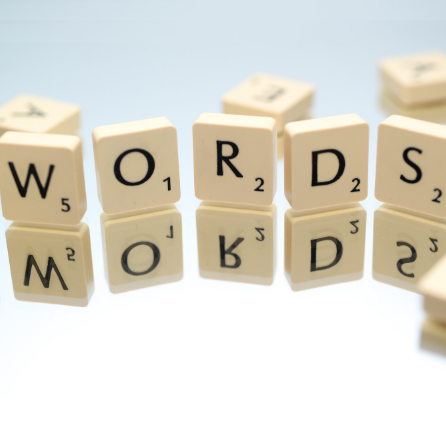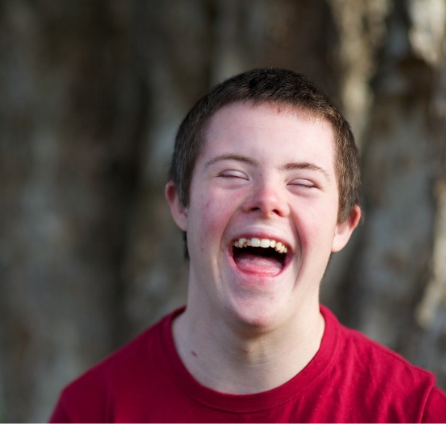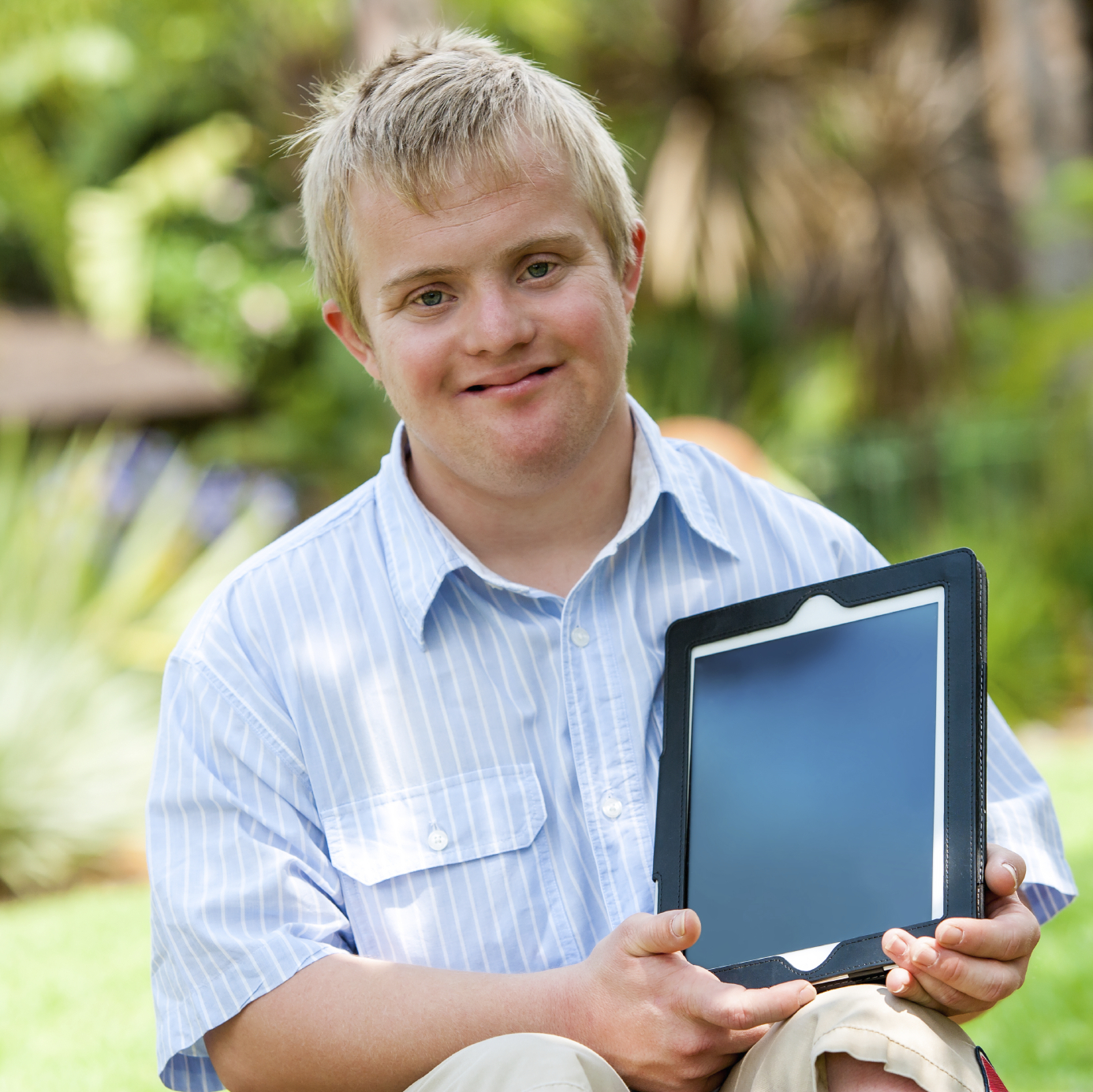OVER 1.2 MILLION PEOPLE
are experiencing communication difficulties in Australia right now.
Communication is an act most of us take for granted every day. Communication is a two-way exchange of information between two people. Communication is a complex process that relies on appropriate language selection (e.g. word use and sentence structure), word and sound articulation (the movements of the throat, jaw, mouth and tongue) to produce speech, fluency (the rhythm of speech), voice, and pragmatics (using appropriate language and gesture given the audience).
If barriers exist and/or equipment for communication is inadequate, individuals’ opportunities to participate are non-existent or reduced.
A person with communication support needs may have expressive and/or receptive communication challenges, and typically require ‘supports’ (such as AAC) to communicate.
Receptive communication
Receptive communication is the ability to receive and understand words, language and information, and plays an important role in communicating successfully. People with receptive communication difficulties may find it challenging to follow directions at home or at school, and may not respond appropriately to questions, requests or social conversations.
Receptive communication includes understanding the written, verbal and nonverbal communication of others, such as:
- Routine (e.g. we have had dinner and a bath and now it’s bedtime)
- Visual cues (e.g. someone opening an umbrella means it’s raining, fire means hot)
- Sounds and words (e.g. the sound of thunder means there is a storm, and the word evacuate means to cautiously make your way out of a building)
- Concepts such as size, shape, colours and time, grammar (e.g. lemon/s, sleep/slept) and written information (e.g. signs in the environment like “stop”, written stories).
People with receptive communication challenges may exhibit some of the following behaviours:
- Difficulty paying attention and listening
- Not following instructions
- Responding to questions by repeating the question instead of answering
- Providing unusual answers to questions.
Some people who experience difficulties understanding oral language (words and talking) may appear to be understanding because they may be able to pick up key words visual cues from the environment or from gestures.





Expressive communication
If receptive communication is the ‘incoming’, then expressive communication is the ‘outgoing’. Expressive communication describes how a person ‘expresses’ or communicates their thoughts, feelings, wants and needs. It includes verbal communication such as speech, vocabulary, intentionality, syntax (arranging words to create well-formed sentences), semantics (meaning/implication) and pragmatics (context); and nonverbal communication such as facial expressions, gestures and behaviours.
Someone with communication support needs may face challenges with speech, which can be further broken down into articulation, voice and fluency.
Speech is the ability to express thoughts and feelings by articulating sounds. It is how we say sounds and words.
Speech includes:
- Articulation – the way we make noises and sounds using our mouth, lips, and tongue. For example, being able to say the “sh” sound in order to pronounce “shoes” instead of “soos”.
- Voice – the sound we produce in our larynx that comes out through the mouth, as speech or song. Our voice can be high pitched or low pitched (deep), soft or loud.
- Fluency – the flow, or rhythm of speech. Speech that is fluent is smooth, progressive, unhesitant and effortless. A “dysfluency” is a disruption in fluent speech – and it is normal to experience these such as pausing to ponder. A person with a stutter has more disfluencies than average.
People with little or no speech are one of the most marginalised and vulnerable groups within the disability area, experiencing the highest incidence of community exclusion and segregation.
Research tells us that people with CSN face restrictions and limitations within the community due to a general lack of awareness and understanding of CSN.
Stemming from this is a hesitance or resistance of Augmentative and Alternative Communication (AAC) systems within facilities such as schools and day centres, and a lack of autonomy with regard to daily activities and places of residence.
“While students with long recognised and well-understood disabilities such as visual or hearing impairments usually receive appropriate support, there appears to be no notion as to what constitutes appropriate support for children who can hear but not speak, and who are likely to have been labelled as intellectually impaired.” – Anne McDonald Centre Feb 2014 Submission to Cth Govt Senate Community Affairs Reference Committee.
People with communication or speech difficulties are particularly disadvantaged because they:
- Have poor employment outcomes and are more likely to be restricted in the type of job (than someone who is able to use speech to communicate); and are more likely to need a disability support person/ someone at work to assist them;
- Have poor social opportunities. They are less likely to receive or make visits to family and friends, and far less likely to communicate with family and friends over the phone. They are also less likely to leave home for social activities and establish relationships/ friendships with people within the community.
“Communication and swallowing disorders are largely invisible (even silent), poorly understood by the general community, and rarely addressed in public policy.” – Speech Pathology Australia submission to Parliamentary Inquiry into Prevalence of Different Types of Speech, Language and Communication Disorders in Australia.
